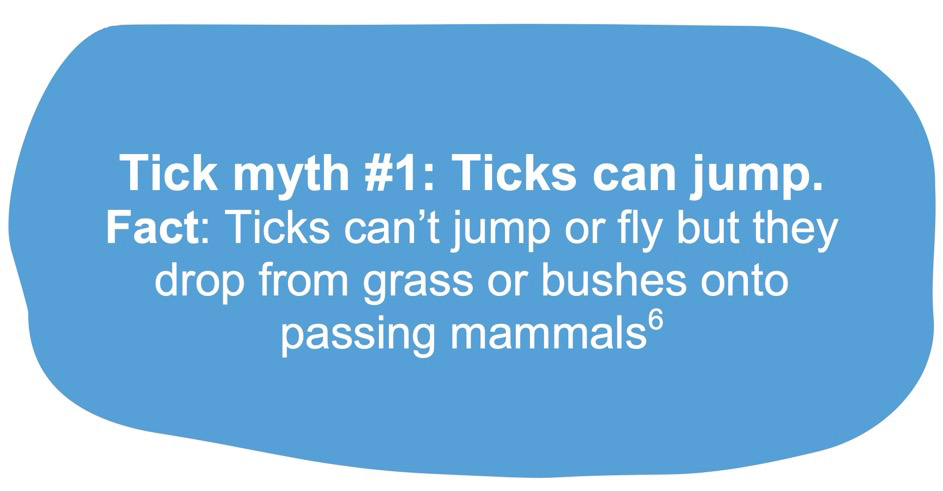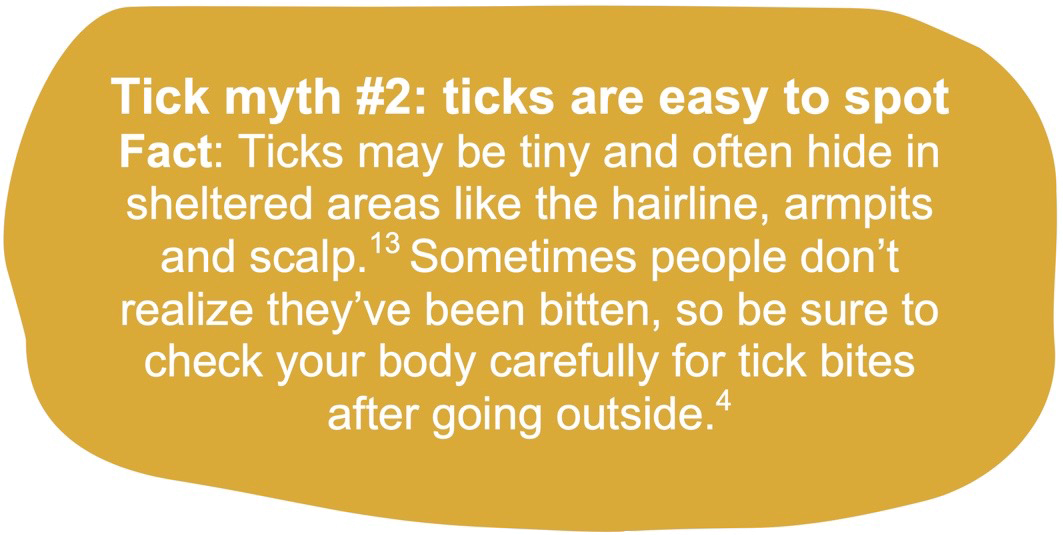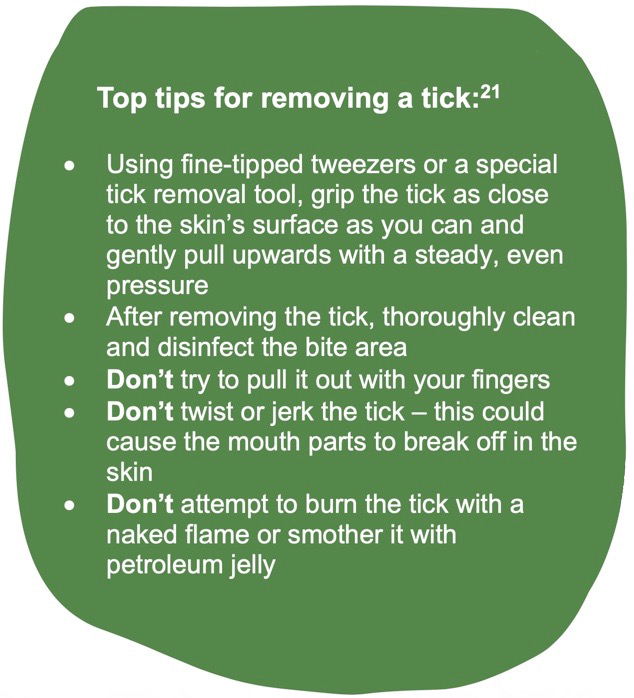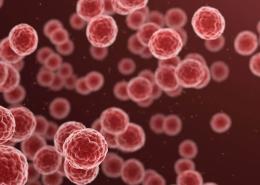Ask an Expert: Professor Joe Schmitt Talks Tick-Borne Encephalitis

Think ticks; think Lyme disease? In recent years, public awareness of Lyme disease has peaked, as high-profile celebrities and others have shone a spotlight on the sometimes-devastating impact this disease can have on health and quality of life. But, Lyme disease isn’t the only risk associated with tick bites. Ticks can also carry other potentially serious diseases, such as Crimean-Congo hemorrhagic fever (CCHF) and tick-borne encephalitis (TBE),1 so it’s important to know how to help protect yourself and loved ones from ticks and the diseases they may carry.
The ‘TBE-virus’ (TBEV) has been detected now on the Eurasian continent from the West (Norway, France) to Russia, China and Japan to the East.2,3 Thus, this viral disease of the brain and spinal cord has now been reported in more than 34 countries across Europe and Asia.2 With improved modern diagnostic methods and with increased awareness, the TBE virus has now been identified in regions that previously were not known to be affected by TBE, such as The Netherlands, Southern France or Japan.2,3 Increased outdoor recreational activities during the seasons with high tick activity are the major risk factor, such as hiking in forests or walks in the park.4
We are committed to helping to protect people while outdoors from harmful infectious diseases, such as TBE, through raising awareness and advancing research. We spoke to Heinz-Josef (Joe) Schmitt, Global Medical, Clinical Development and Scientific Affairs Lead, Viral Vaccines, to find out more about ticks, TBE and what people can do to help protect themselves and loved ones from tick-borne diseases.
Professor Joe Schmitt, Global Medical, Clinical Development and Scientific Affairs Lead for Pfizer’s Virus Vaccines
Q. What are ticks and where are they found?
Ticks are tiny parasites, just 0.5mm up to 15mm in size.5 They live on the ground in forests and grass, both in urban and rural areas, and feed on the blood of many different mammals, including deer, rodents, humans or family pets.5
Ticks are most active from early spring to late autumn, when the weather is warmer.6 Given their small size, they can be hard to spot, so check your body carefully for ticks after you’ve been outside if you live in or travel to an area where they can be found.4
Q. What microbes do ticks carry?
Not all ticks carry microbes, but because they feed on so many different animals, they can be carriers of a range of diseases that affect humans, including:5,7
| Tick-bourne diseases | Cause |
| Lyme disease | Borrelia Burgdorferi (B) |
| Tick-bourne encephalitis | TBE Virus (V) |
| Babesiosis | Babesia spp. (P) |
| Crimeean-Congo Haemorrhagic Fever (CCHF) | CCHF Virus (V) |
While ticks aren’t affected by these diseases themselves, infected ticks can pass them on to humans through their bites.5
Q. What is TBE, and what are the symptoms?
TBE is a rare viral infection of the brain and spinal cord, which is transmitted to humans via the bite of an infected tick.8
Most people infected with the TBE virus show no symptoms, but if there are symptoms, they typically appear in two phases.9 In the first phase, people suffer flu-like symptoms, including fever, muscle pain, headache and fatigue. In fact, the disease can often be mistaken for “summer flu” at first.4,9 After a respite period of a few days or a week, some people will experience the second phase, clinically characterized by meningitis, encephalitis and / or myelitis.9 Encephalitis means that the brain itself is infected and this may result in permanent brain damage with paralyses and/or mental impairment.9,10 One to two percent of patients with TBE die.9
Q. How are people with TBE treated and what is the outlook for people who get the disease?
There is no specific medication or other treatment for TBE,11 so medical care is focused on treating the symptoms of the disease to prevent complications.12
Most people with TBE will recover, but up to 50% will suffer from long-term complications like paralysis, seizures and problems with balance and speech.8,10
Q. How is TBE different from Lyme disease?
Both Lyme disease and TBE are transmitted to humans via tick bites and both have potentially serious long-term consequences.2,7 However, there are several key differences, including:
- Type of disease – TBE is caused by a virus, whereas Lyme disease is a bacterial infection..2,14
- Transmission – TBE is transmitted to a person immediately through a single bite from an infected tick,5 while a tick needs to be attached to a person for around 36-48 hours before infection with the Lyme disease bacterium occurs.15
- Symptoms – Lyme disease is typically associated with the early symptom of red ‘bullseye’ rash with a clear central zone – although this doesn’t occur in everyone infected.16 For TBE, there is no specific initial symptom – the diagnosis can only be established by serology (blood testing).17,18
- Treatment – There is no specific treatment for TBE but, as a bacterial disease, Lyme disease can be treated with antibiotics in most cases.17,19
- Protection – There has been a vaccine against TBE since 1976,2 but there is currently no vaccine for Lyme disease,20 so it’s important to take measures to avoid being bitten by ticks.
Q. Who is at risk of TBE and how can people help protect themselves and loved ones?
To date, TBE has been reported in more than 34 countries worldwide, and it is emerging in additional regions where it had not been detected before.2 People who live in, or travel to, these countries or regions are at the most risk when they’re engaging in outdoor activities like walking, camping, horse-riding or having a picnic.2 This applies from spring to autumn, as ticks are most active when the temperature is above 6o C.17,8
People can take a range of measures to help protect themselves against TBE and other tick-borne diseases. These include wearing long-sleeved tops and trousers, using insect repellent and avoiding tick-infested areas of forest where possible.9 Vaccination is an option for only TBE in certain countries where it is approved for use. For Lyme disease, there is no approved vaccination but it can be treated with antibiotics.7,17 However, because it takes several hours or days for ticks to transmit the agent of Lyme disease to humans (unlike TBE which can be transmitted to humans immediately after a tick bite),2,13 people who’ve been outdoors can reduce their risk of catching Lyme disease by checking their body for ticks and removing any they find as soon as possible.4,21
Talk to your healthcare professional for further advice on preventing tick-borne diseases.
Q. Why are you passionate about raising awareness of TBE?
TBE can potentially have serious consequences – but it can be prevented. By being aware, people can take steps to help protect themselves and those they love from TBE and other tick-borne diseases. Everyone should be free to enjoy the outdoors without worrying about tick-borne diseases.
Learn more about our ongoing work to tackle infectious diseases like TBE.
References
- European Centre for Disease Prevention and Control. Leaflet for travellers on tickborne diseases. Available from: https://www.ecdc.europa.eu/en/publications-data/leaflet-travellers-ticks-tickborne-diseases-and-preventive-measure. Accessed: November 2019
- Dobler G, et al. Tick borne encephalitis (TBE) - The Book. Available from: https://id-ea.org/tbe/. Accessed: January 2019.
- Leger E, et al. Changing distributions of ticks: causes and consequences. Exp Appl Acarol. 2013;59(1-2):219-44.
- Travel Health Pro. Factsheet. Tick borne encephalitis. Available from: https://travelhealthpro.org.uk/factsheet/22/tick-borne-encephalitis. Accessed: January 2020.
- European Center for Disease Prevention and Control. Small bites, big Problems: tick-borne diseases in Europe. Available from: https://www.ecdc.europa.eu/sites/default/files/media/en/healthtopics/vectors/infographics/Documents/tick-borne-diseases-infographic-2014.jpg. Accessed: November 2019
- Centre for Disease Control and Prevention. How ticks spread disease. Available from: https://www.cdc.gov/ticks/life_cycle_and_hosts.html. Accessed: November 2019.
- European Centre for Disease Prevention and Control. Factsheet about Borreliosis. Available from: https://ecdc.europa.eu/en/borreliosis/facts/factsheet. Accessed: January 2020
- European Centre for Disease Prevention and Control. Key messages about Tick-borne encephalitis and tick-borne diseases. Available from: https://ecdc.europa.eu/en/borreliosis/facts/factsheet. Accessed: January 2020
- Encephalitis society. Tick-borne encephalitis. Available from: https://www.encephalitis.info/tick-borne-encephalitis. Accessed: November 2019
- Kaiser R. Tick-borne encephalitis. Infect Dis Clin North Am. 2008;22(3):561-75.
- Centers for Disease Prevention and Control. Tick-borne Encephalitis. Treatment. Available from: https://www.cdc.gov/vhf/tbe/treatment/index.html. Accessed: November 2019
- Kollaritsch H, et al. Vaccines and vaccination against tick-borne encephalitis. Expert Rev Vaccines. 2012;11(9):1103-19.
- Centers for Disease Control and Prevention. Lyme Disease: Transmission. Available from: https://www.cdc.gov/lyme/transmission/index.html. Accessed: November 2019
- Global Lyme Alliance. About Lyme. Available from: https://globallymealliance.org/aboutt-lyme/. Accessed: November 2019
- Centers for Disease Control and Prevention. Lyme Disease: Transmission. Available from: https://www.cdc.gov/lyme/transmission/index.html. Accessed: November 2019
- Centers for Disease Control. Lyme disease. Signs and Symptoms. Available from: https://www.cdc.gov/lyme/signs_symptoms/index.html. Accessed: August 2019
- Lindquist L, et al. Tick-borne encephalitis. The Lancet. 2008;371(9627):1861-71.
- Sundin J, et al. Pediatric tick-borne infections of the central nervous system in an endemic region of Sweden: a prospective evaluation of clinical manifestations. Eur J Pediatr. 2012;171(2):347-52.
- Centers for Disease Control. Lyme disease. Available from: https://www.cdc.gov/lyme/index.html. Accessed: November 2019
- Centers for Disease Control. Lyme disease. Treatment. Available from: https://www.cdc.gov/lyme/treatment/index.html. Accessed: February 2020
- Centers for Disease Control. Tick removal. Available from: https://www.cdc.gov/ticks/removing_a_tick.html. Accessed: April 2020
![]()









